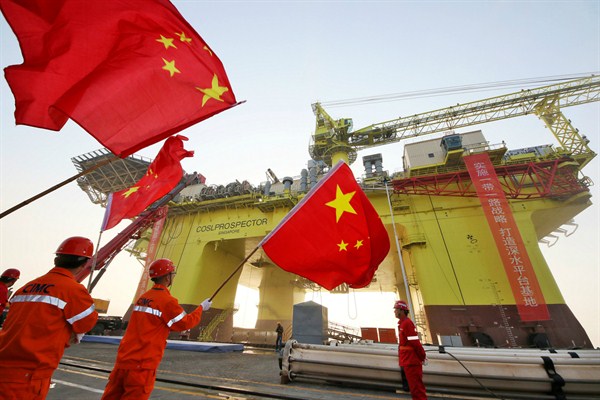With China’s aggressive posture in the South China Sea undermining the popular narrative of its peaceful rise, many experts correctly point to the dual tides of nationalism and militarization as drivers of hostile behavior. But leaning too heavily on these explanations conceals a third factor behind Beijing’s maritime claims: a burgeoning demand for energy.
Already the world’s largest energy consumer, China will only need more in the coming years to maintain sustained urbanization and industrialization. As more people move into cities and China’s economic output rapidly expands, its energy consumption will increase by nearly 50 percent through 2035, accounting for a quarter of all global consumption.
In an effort to reduce its dependency on dirty energy and decarbonize its economy, China—also the world’s largest polluter—seeks to switch from coal to gas for power generation, straining its capacity to domestically source power. As a result, the country’s dependence on energy imports will expand from 15 percent today to nearly 25 percent through 2035. Even zero-carbon options like nuclear and renewable energy will not be sufficient to satisfy skyrocketing demand for cleaner energy in China, which will still have to rely on oil and gas.

